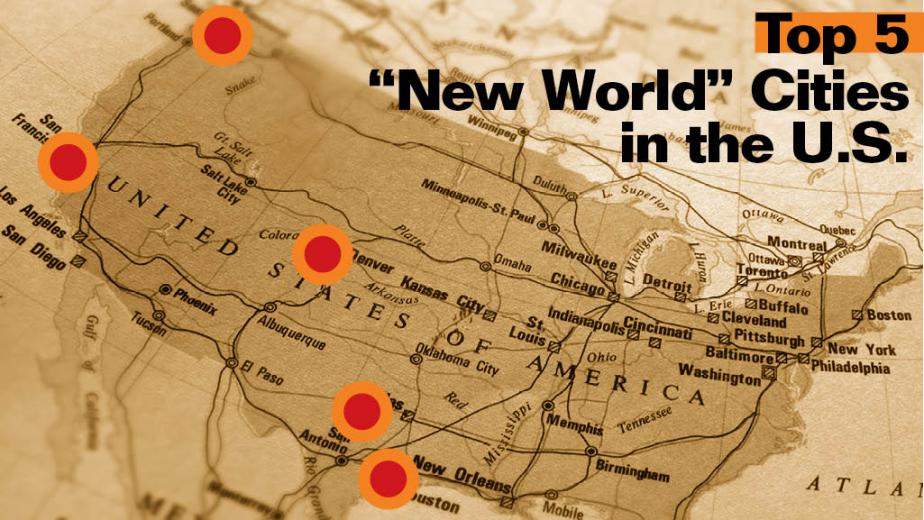1 6
1 6
Houston’s popularity is tied to the oil and gas sectors, which have slumped since oil prices dropped below $50 per barrel, with no increase expected until next year. Office fundamentals have weakened during 2015, with overall vacancy increasing to 15.9 percent, according to real estate services firm Cushman & Wakefield. New construction could push that figure higher, as 10.3 million sq. ft. of new office space will come on-line by the end of 2016. Rents haven’t dropped yet, however.
Austin’s current claim to fame is having the lowest unemployment rate of the 50 large U.S. metropolitan markets, at 3.2 percent. The city is a popular relocation spot for people and companies, and job growth and high employment have contributed to an extremely healthy business climate, according to Cushman & Wakefield. Office vacancy has dropped from almost 23 percent in 2010 to 9 percent in the third quarter of this year.
Denver is somewhat of an anomaly on this list, as the Mile-High City is not located near a coastline and does not have a massive technology sector. However, technology jobs have grown considerably here, adding diversity to this formerly energy-reliant market, according to Peter Knisely, associate director in the Denver office of real estate services firm Savills Studley. Denver has benefited from its high quality of life, as it has ranked at the top of many surveys for the United States. The unemployment rate here is also among the lowest in the country, at 3.6 percent. Cushman & Wakefield estimates that office vacancy in the city is at 10.2 percent, but not much new supply is expected in the near term and Denver’s business start-up efforts are strong. “Denver’s downtown is really attracting millennials, with development of new multifamily towers almost non-stop today. Every time I think the market can’t handle a new building, it gets leased up almost immediately after opening. We’re also seeing record high office rents, with class-A pushing up to $50 per sq. ft. gross,” Knisely says.
First half sales declined 20 percent to reach $5.22 billion in Seattle. One major sale was the Midtown 21 office building, which sold for $330.2 million or about $885 per sq. ft.
San Francisco’s recent success as the top U.S. office market, led by the bustling technology sector, is evidenced by record high office rents and vacancy in the single digits. Overall, office vacancy in the city is down to 6 percent as of the third quarter, according to Cushman & Wakefield, and average asking rent rose from $57.87 per sq. ft. in 2014 to $66.71 per sq. ft. today. The unemployment rate is down to 4.1 percent, a full percentage point lower than the average for the U.S. as a whole. The computer systems design industry and related services have totally taken over this office market, and with more than 70,000 open job positions today, are expected to overtake financial services positions in the city by early 2016. “San Francisco is almost a hybrid market; it’s gotten so large it could take on the characteristics of an ‘old world’ market,” Kelly says.

